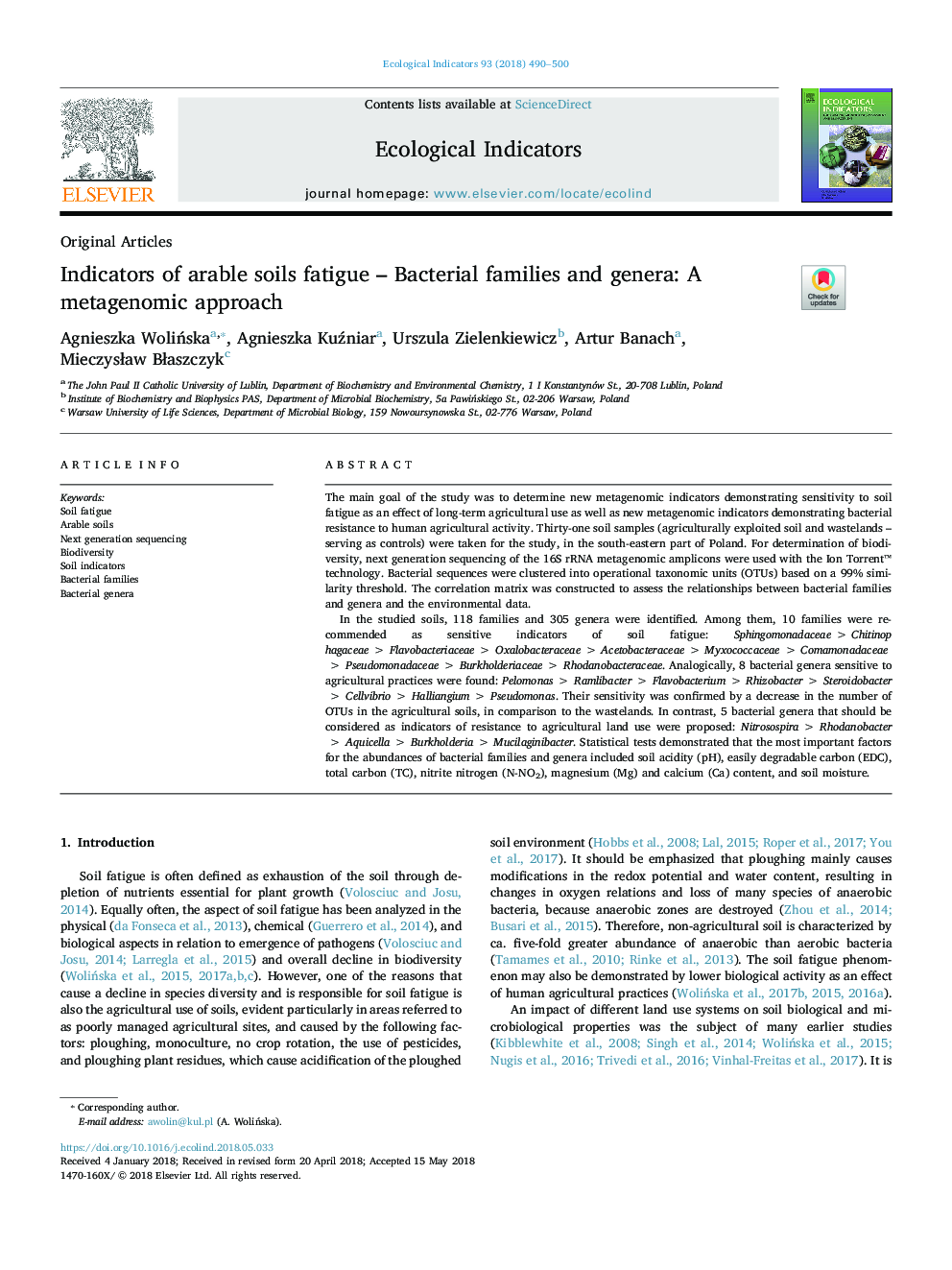| Article ID | Journal | Published Year | Pages | File Type |
|---|---|---|---|---|
| 8845166 | Ecological Indicators | 2018 | 11 Pages |
Abstract
In the studied soils, 118 families and 305 genera were identified. Among them, 10 families were recommended as sensitive indicators of soil fatigue: Sphingomonadaceaeâ¯>â¯Chitinophagaceaeâ¯>â¯Flavobacteriaceaeâ¯>â¯Oxalobacteraceaeâ¯>â¯Acetobacteraceaeâ¯>â¯Myxococcaceaeâ¯>â¯Comamonadaceaeâ¯>â¯Pseudomonadaceaeâ¯>â¯Burkholderiaceaeâ¯>â¯Rhodanobacteraceae. Analogically, 8 bacterial genera sensitive to agricultural practices were found: Pelomonasâ¯>â¯Ramlibacterâ¯>â¯Flavobacteriumâ¯>â¯Rhizobacterâ¯>â¯Steroidobacterâ¯>â¯Cellvibrioâ¯>â¯Halliangiumâ¯>â¯Pseudomonas. Their sensitivity was confirmed by a decrease in the number of OTUs in the agricultural soils, in comparison to the wastelands. In contrast, 5 bacterial genera that should be considered as indicators of resistance to agricultural land use were proposed: Nitrosospiraâ¯>â¯Rhodanobacterâ¯>â¯Aquicellaâ¯>â¯Burkholderiaâ¯>â¯Mucilaginibacter. Statistical tests demonstrated that the most important factors for the abundances of bacterial families and genera included soil acidity (pH), easily degradable carbon (EDC), total carbon (TC), nitrite nitrogen (N-NO2), magnesium (Mg) and calcium (Ca) content, and soil moisture.
Related Topics
Life Sciences
Agricultural and Biological Sciences
Ecology, Evolution, Behavior and Systematics
Authors
Agnieszka WoliÅska, Agnieszka Kuźniar, Urszula Zielenkiewicz, Artur Banach, MieczysÅaw BÅaszczyk,
